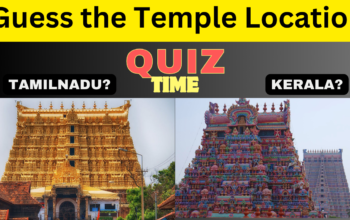I was hurriedly wandering in the lobby of the airport after check-in to see if ‘anything’ could catch my attention. Habits don’t go anywhere, they come along 😛
And as per my habit, fortunate or unfortunate, my attention was dragged, almost instantaneously on to a book that’s kept for sale of offer, a book that is lot more worth than that discount offer , which I realized few days after once I finished reading it.
Everybody loves a good drought , by P. Sainath.
I had a break journey and had to wait Istanbul for around eight hours. I thought to go around the vast airport, but within 20 min itself, I know what I want to do. I went through the list of books I have with me (ten of them) and got hold of this book. I started reading and didn’t stop, till I reached my destination.
Though I was flying at around 30,000 ft high and more than 5000 Km away from where I belong, with thick layers of clouds below giving me a never seen before view, thanks to the book, I was not even enjoying the beauty of the blue sky but my thoughts totally are glued to those remotest districts and villages where 3/4th of the Indian population still struggle for basic amenities.
I always wanted to go and visit those villages, not for tourism sake or to see how ‘people live’ , but to do something that I could do. A generic sense of empathy and altruism, that comes to any other person. I am not sure of all , but one of my friends definitely concurs with me on this , to visit these not much traveled roads (if there are any roads), and do this something.
It took a lot of time to know what this ‘do something’ should really turn into. We cannot have vague plans if we want to have visit , say five to ten villages over a period of two weeks, and spend all the time there. But we are sure not to waste the opportunity but to utilize it to the maximum, for everyone’s good. We are extra careful.
Many days are spent trying to find what all can be done, and should be done. But it is books like the one I mentioned above, that give all the necessary thoughts for something like this. They show what villages want, whom we should listen to when it comes to knowing the problems, whether we need case by case solutions or not etc.
Some of the illustrations Sainath gave in his book are extremely depressing and shocking at the same time. Administrators , politicians and social workers have at times, all have missed some of the most trivial points in addressing the problems of the poorest of the districts in Orissa, Bihar, Madhya Pradesh etc. At the same time, the book shows how an able and determined administrator (mostly the district collector) can make a difference to the lives of the marginal farmers and agricultural labor.
But the best of the suggestions for what needs to be done , for the villages and for the country as a whole, had been preached and implemented by example, before sixty years, for around thirty years , by Gandhi.
Gandhi suggested and did, to visit the rural places, where the actual India is, and he didn’t just went there to know their problems and collect them. He gave them his ideas, his mind. He gave his suggestions. He made sure that whatever he knows , whatever is right, is also known to all of them, and tried to make sure that they indeed do that.
When the full country , especially the west and east belts of the country (surrounding Pak) is burning in partition , Gandhi preached peace and mutual co-existence in some of the remotest villages of Bihar and Kolkata. Not just that. He also explained how to make sure malaria won’t affect the people and how to get rid of mosquitoes !! You don’t need to do or have a mahatma’s brain. All we need is to know the local problem, and suggest some ideas from our own experience.
My experience so far, through the India I saw from the books I read, from TV and newspapers, from the gossips of friends n relatives, I think it is important , whenever I visit any of these villages or other rural areas, to let those people know their entitlements. Most of them don’t even know what they can get for free, what they can get for subsidy, and what they can be paid for their work. It is the knowledge about their entitlements that can empower them ! I want to do that. I want to empower them through my whatever wisdom I gathered.
Though the plan didn’t realize as such so far, we are still very much happy that we did the exercise, and hoping that one day , this road travel would hit the diaries.
I hope so. Always. Forever.
WorthvieW
Related Posts
Love playing Tennis. Love Movies











wonderful idea dude.. its our responsible to work for the socio economic development of rural india. Its not like giving food security or something else, but to provide the diginity and respect to those living in rural areas and provide them required technology and knowledge in achieving sustainable socio economic development. we, educated, must serve the rural india from where we came.
Good one…..Hope I will also be able to contribute to your cause….